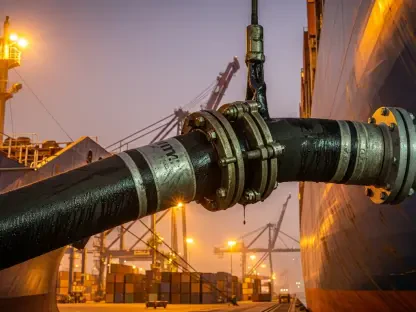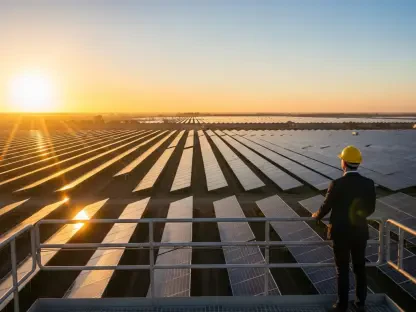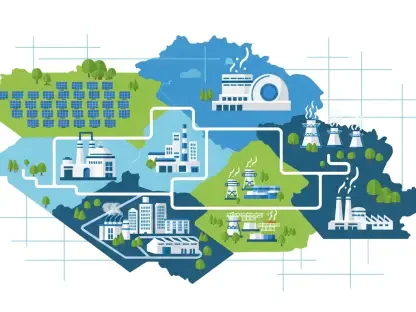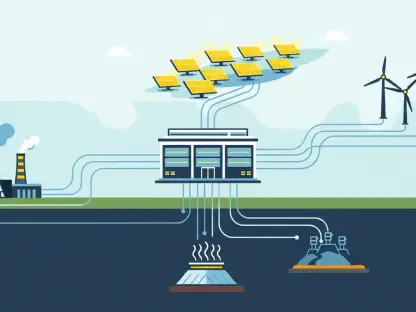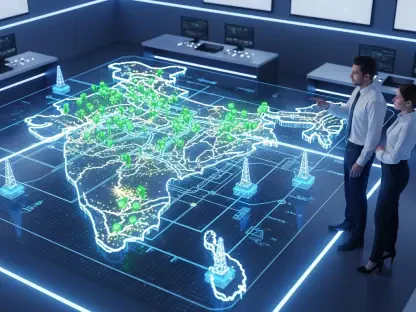The United States is grappling with significant challenges in its power transmission infrastructure, which hinders the efficient distribution of renewable energy and poses a threat to the nation’s energy transition goals. The inadequate and fragmented grid structure, combined with regulatory and political hurdles, underscores the urgent need for comprehensive reforms to achieve decarbonization objectives.
Fragmented Grid Constrains Renewable Energy Distribution
The U.S. power grid is divided into ten distinct regions, each functioning independently, which limits the capacity to transport energy from generation sites, often located in rural areas, to urban centers where energy consumption is highest. This segmented structure leads to energy inefficiencies, frequent power outages, and increased energy security risks, particularly during extreme weather conditions. As renewable energy sources like wind and solar power proliferate in rural zones, this fragmentation becomes a more pressing issue, preventing the optimal distribution of clean energy where it’s needed most.
Regulatory Reforms and Persistent Challenges
Several barriers impede the development of new transmission projects, primarily stemming from cumbersome regulatory frameworks and local opposition. The current procedures for approving and constructing new transmission lines are notoriously slow, often taking years to navigate through red tape. The lack of federal coordination further exacerbates these delays, making it difficult to expand the grid to accommodate renewable energy sources effectively. Although the Inflation Reduction Act (IRA) aims to incentivize the development of energy infrastructure, these measures alone are insufficient to overcome the entrenched bottlenecks that plague the system.
The Continued Role of Natural Gas
Despite the focus on renewable energy, natural gas remains an essential component for stabilizing electricity supply throughout the transition. Regions like New York and New England have a high dependence on natural gas for power generation, which underlines the necessity for reliable transmission and storage solutions to prevent electricity price fluctuations. As renewables slowly become a more dominant force in the energy market, the stability provided by natural gas infrastructure will continue to be crucial.
Implications of the Inflation Reduction Act
Passed in 2022, the Inflation Reduction Act redirects investments toward modernizing the energy infrastructure with an emphasis on renewables. However, the political landscape complicates its implementation, with tax credits predominantly benefiting Republican districts, leading to tensions across party lines. Additionally, concerns about dependency on foreign supply chains, particularly from China, highlight the need for a more robust and self-reliant infrastructure development strategy.
Advocating for an Integrated National Grid
Experts argue that the solution lies in transforming the fragmented grid into a fully integrated national system. Such a system would allow for efficient electricity transportation across the United States, requiring substantial political will, economic investment, and collaboration among various stakeholders. This proposed overhaul aims to create a seamless, interconnected network, significantly enhancing the country’s ability to meet its renewable energy and decarbonization targets.
Overarching Trends and Consensus Viewpoints
The consensus among experts is clear: the U.S. must develop an integrated national grid to ensure the efficient distribution of renewable energy. The need for regulatory reform to address systematic delays is a common theme, highlighting the bureaucratic challenges that stall infrastructure projects. Furthermore, while natural gas continues to play a critical role in maintaining grid stability, it underscores the necessity for better storage and transmission capabilities to facilitate the shift to renewables.
Main Findings
The existing fragmented grid hampers the efficient distribution of renewable energy, creating supply and demand imbalances. Delays caused by regulatory procedures and local opposition are significant obstacles to infrastructure expansion. While the IRA offers some incentives, it falls short of addressing the deep-rooted infrastructural challenges. Natural gas remains vital for grid stability; however, without enhanced storage and transmission infrastructure, the transition to renewables may lead to increased price volatility. Achieving long-term decarbonization goals necessitates a national integrated grid, though substantial political and economic barriers must be overcome.
Conclusion
The United States is facing critical challenges with its power transmission infrastructure, creating significant obstacles for the effective distribution of renewable energy. This issue complicates the nation’s energy transition goals and emphasizes the urgent necessity for modernization. Currently, the U.S. grid is outdated and fragmented, unable to meet the demands of an evolving energy landscape that increasingly relies on green energy sources like wind and solar power. The complications don’t end with hardware; regulatory and political hurdles further complicate efforts to modernize the grid. These barriers make it difficult to implement necessary reforms and policies that are crucial for achieving decarbonization and meeting future energy needs. In addition, the lack of a streamlined, cohesive approach to grid development exacerbates inefficiencies and delays in energy distribution. This scenario urgently calls for comprehensive reforms that not only address hardware upgrades but also remove regulatory and political barriers. A unified, robust power grid is essential for the successful transition to renewable energy and the attainment of the nation’s long-term energy goals.


